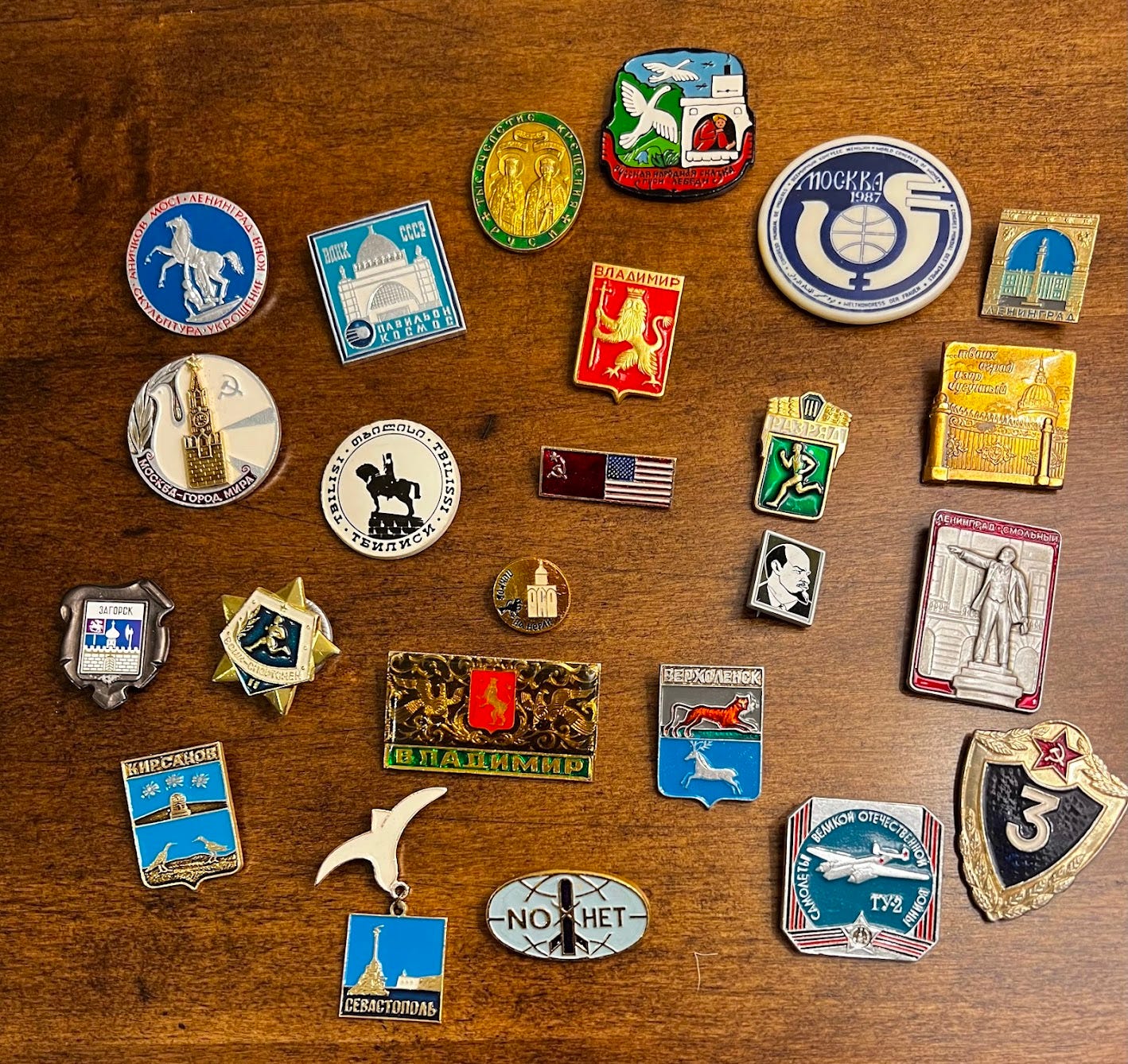Perry Hewitt | February 21, 2024
The Znachki Edition
On Navalny, commemorative pins, and imagined futures.
Perry Hewitt (PSH) brings modern marketing and digital product practices to mission-led organizations. As the Chief Marketing and Product Officer at data.org, she focuses on building capacity and community to advance data for social impact.
Perry here. Digging in a drawer a few weeks back, I found a box of Russian pins, or znachki (значки), acquired during my few years of study and work stints in the rapidly dissolving USSR in the late 1980s and early 90s.
Although commemorative znachki date back a couple of centuries, their heyday was the 1960s to the 1980s. During this period znachki weren’t limited to just being awards for work done well but instead produced more expansively as souvenirs to commemorate cities, factories, anniversaries, trade associations, and general Soviet-era advancements ranging from automotive production to space travel. They were worn by ordinary people, not only Komsomol-style patriots, and were avidly collected by teenage boys.
In the 1980s, the country embarked upon perestroika, a series of political and economic reforms enacted by Soviet leader Mikhail Gorbachev. At that time, the moderate increase in foreigners working in and visiting the USSR, including as part of scientific and academic exchanges, meant these pins were often pressed into the palms of international visitors. Hence the box sitting in the back of the drawer.
Why is this interesting?
My haphazard collection of znachki strikes me now as a snapshot of a far more hopeful time.
Yes, there are several more traditional, commemorative pins: the Lenin monument in front of the Smolny Institute (Bolshevik HQ back in the day); the cities of Vladimir and Zagorsk; the space pavilion at the Exhibition of Achievements of National Economy (VDNH); a thousand years of Christianity in Russia; and the Tupelo Tu-2, a twin-engined bomber aircraft in the Great Patriotic War.
But several others stood out to me as a reminder of the hope many had during that time. There was a strong belief that the reforms at the end of the Soviet era would increase opportunity and prosperity, and promote a more open exchange of ideas and people across borders. Some of my pins reflect this optimism:
The znachok for the World Congress of Women in Moscow in 1987 appears in multiple languages; the theme was "Toward 2000 - Without Nuclear Weapons: For Peace, Equality, Development." A second znachok offers a firm no/нет against nuclear weapons. Nearly 40 years later, Russia is contemplating nuclear weapons in space.
The znachok for the city Tblisii is also rendered in multiple languages, with the city’s name appearing in Cyrillic and Latin characters alongside Georgian. This was produced about 20 years before the Russo-Georgian War in 2008, now considered by many to have been a dress rehearsal for the ongoing invasion of Ukraine.
Finally, the znachok of the Soviet and US flags united, predicting an era of peaceful and productive collaboration that has instead devolved into cyberwars, bots, and deepfakes.
I snapped the picture above just days before the murder of Alexei Navalny, the Russian opposition leader who flew back to Russia in 2021 to near-certain imprisonment and death. Nearly 400 people commemorating his death with flowers and pictures have been arrested already. My znachki are a wistful reminder of what many of us then thought possible for Russia, and the work it would take—and that we can’t give up on—to change its current course. (PSH)
—
Thanks for reading,
Noah (NRB) & Colin (CJN) & Perry (PSH)
—
Why is this interesting? is a daily email from Noah Brier & Colin Nagy (and friends!) about interesting things. If you’ve enjoyed this edition, please consider forwarding it to a friend. If you’re reading it for the first time, consider subscribing (it’s free!).
